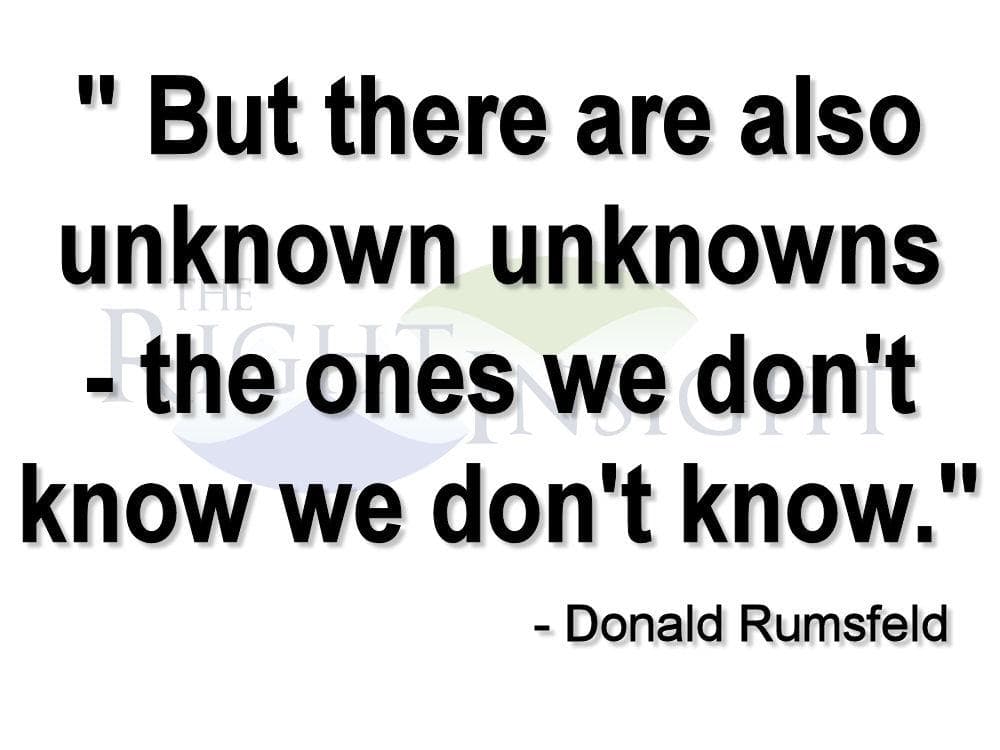“There are known knowns. These are things we know that we know. There are known unknowns. That is to say, there are things that we know we don't know. But there are also unknown unknowns. There are things we don't know we don't know.”,
Donald Rumsfeld
Known Knowns (Things we know we know.)
- Earth has climates, which are aggregated to a global climate.
- Earth’s climates have changed in the past.
- Earth’s climates are changing now.
- Global aggregate climate is changing now.
- Earth has experienced glacial periods.
- Earth has experienced interglacial periods.
- Earth has experienced warmer and cooler periods during interglacials.
- Earth’s average near-surface temperature is rising.
- Earth’s sea surface temperature is rising.
- Earth’s sea level is rising.
- Human actions are adding CO2 and other chemicals to the atmosphere.
- CO2 and Methane absorb and reradiate infrared energy in the atmosphere.
- Water vapor is the primary absorber and re-radiator of infrared energy in the atmosphere.
- Human actions are changing earth’s albedo.
- Human cities create urban heat islands.
- The globe is greening, largely as the result of increased atmospheric CO2.
- Increased atmospheric CO2 makes plants grow faster and use water more efficiently.
- Earth’s seas are absorbing more CO2 and becoming slightly less basic.
- Earth’s oceans experience warm and cool phases. (AMO, PDO)
- ENSO produces localized warming and cooling of the Pacific Ocean.
- We have no comprehensive, validated and verified model of earth’s climate.
- We have no validated and verified attribution model.
Known Unknowns (Things we know we don’t know.)
- The factors which trigger glacial periods.
- The factors which trigger interglacial periods.
- The duration of interglacial periods.
- The relative effects of those factors.
- The factors which cause climate to change within glacial and interglacial periods.
- The factors which determine when those climate changes occur.
- The factors which determine the magnitude of those climate changes.
- The factors which determine the duration of those climate changes.
- The factors which determine whether those climate changes will be warmer or cooler.
- The global average near-surface temperature.
- The global average sea surface temperature.
- The global average ocean temperature.
- The global average near-surface temperature anomaly.
- The global average sea surface temperature anomaly.
- The global average rate of sea level rise.
- The impacts of human activity on future global average near-surface temperature.
- The impacts of human activity on future global average sea surface temperature.
- The impacts of climate change on tropical cyclones.
- The impacts of climate change on tornadoes.
- The impacts of climate change on droughts.
- The impacts of climate change on floods.
- The sensitivity of the atmosphere to a doubling of atmospheric CO2
- The magnitude of cloud feedback and whether it is positive or negative.
- The Social Cost of Carbon (Dioxide).
- The future Resource Consumption Pathway.
Unknown Unknowns (Things we don’t know we don’t know.)
- We just do not know.
In summary, we know generally what has happened in the past and what is happening now. We do not clearly understand how and why what happened in the past happened. We do not clearly understand how and why what is happening now is happening. We do not have the validated and verified tools to comprehensively model the current atmosphere, no less to predict with confidence what will happen in the future. We have produced advanced satellite measurement tools, but have yet to resolve the differences between their measurements and our historical direct measurements.
Regardless, we continue to report with two decimal place precision numbers we do not know to one decimal place accuracy, to make future climate projections based on incomplete models and uncertain feedbacks, and to attribute weather change to climate change with unvalidated and unverified models.
